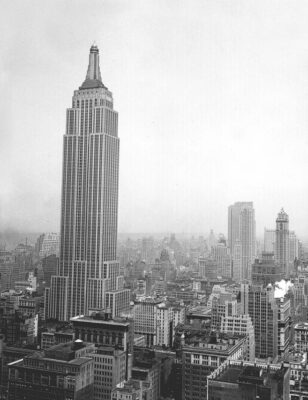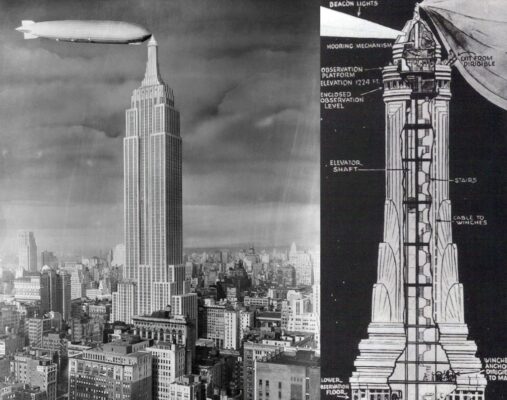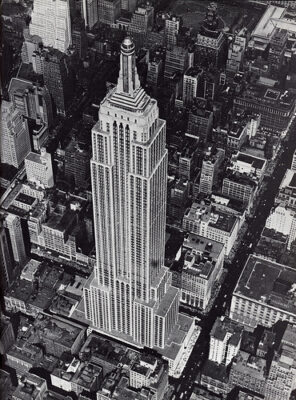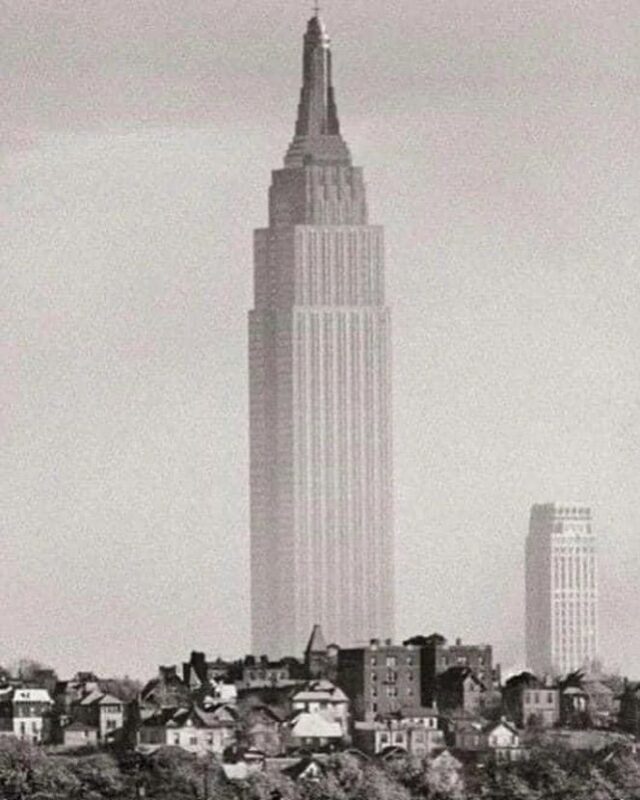The Empire State Building is one of New York City’s most iconic landmarks, known for its towering presence and historical significance. However, a look back at the year 1941 offers a unique perspective on the building before it became surrounded by the modern skyline we see today. This article explores the Empire State Building in 1941, offering a glimpse into a time when it stood as a solitary giant in the city. Follow archeology.dulichvn.net to discover many hidden mysteries that have yet to be discovered.

The Empire State Building’s Role in 1941
A Symbol of Progress
In 1941, the Empire State Building was already an established symbol of American ingenuity and progress. Completed in 1931, it was the tallest building in the world at the time, standing as a testament to the country’s ambition during the early years of the Great Depression. Its iconic Art Deco design represented modernity and strength, which resonated with the American public, especially in such challenging times.
The Empire State Building as a Landmark
By 1941, the Empire State Building had become a recognized landmark in New York City. It attracted visitors from around the world, and its 86th-floor observation deck offered panoramic views of the city. The building’s distinctive silhouette was already etched in the skyline, but it stood largely alone, with far fewer tall skyscrapers around it compared to today.
A Busy Hub Amidst a Growing City
While the surrounding area of New York City was bustling with life, the Empire State Building itself played a central role in the city’s business and cultural life. Many offices were housed within the building, and it served as a beacon for workers, tourists, and entrepreneurs. It wasn’t just a tall structure; it was a symbol of the city’s vitality and resilience.

The Skyline of 1941: An Empty Horizon
The Lack of Skyscrapers
One of the most striking features of the Empire State Building in 1941 was the lack of skyscrapers surrounding it. In the early 20th century, the city’s skyline was still in its infancy. The Empire State Building stood as a solitary giant among a sea of smaller buildings, with few tall structures around it. The space around it was far less crowded, offering an unobstructed view of the building from various vantage points.
Pre-War New York
New York City in 1941 was on the cusp of entering World War II. While the city had a rich history of tall buildings and bustling activity, it was still in a period of transition. The absence of skyscrapers around the Empire State Building highlighted how much the city’s skyline would change in the coming decades, as taller buildings began to rise rapidly following the war.
A Contrast to Today’s Skyline
The Empire State Building of 1941 presents a striking contrast to today’s New York City skyline, which is packed with towering structures. Modern skyscrapers such as the One World Trade Center, the Chrysler Building, and the Bank of America Tower now surround the Empire State Building, giving it a very different appearance. In 1941, it was the undisputed king of the skyline.

Historical Significance of the Empire State Building
A Monument to American Resilience
During the early 1940s, the Empire State Building was more than just an architectural feat; it became a symbol of American resilience during the Great Depression and the onset of World War II. The building’s completion during the Depression era showed the country’s ability to rebound from hardship, and its prominence in the city’s skyline represented strength in the face of adversity.
Architectural Innovations
The Empire State Building was not just a feat of size; it was also a marvel of engineering and architecture. Designed by William F. Lamb of the Shreve, Lamb & Harmon firm, the building employed innovative construction techniques, including the use of lightweight steel frames. These innovations would influence future skyscraper designs across the globe.
The Empire State Building’s Cultural Impact
Even in 1941, the Empire State Building was already etched into the cultural fabric of America. It had already been featured in numerous films, including the iconic scene from King Kong (1933), where the giant ape climbs the building. Over time, it would continue to be featured in films, books, and popular culture, cementing its role as a symbol of New York City and American spirit.
See more: Giovanni Spertini’s “Girl Writing” (1874): A Masterpiece in Marble
Conclusion
Looking back at the Empire State Building in 1941 provides a fascinating snapshot of New York City’s skyline and its evolving role in American history. Standing tall amidst a city in transition, the Empire State Building represented the ambition and resilience of the country. Today, as part of a modern and crowded skyline, it remains a timeless symbol of architectural innovation and cultural importance.


CÁC TIN KHÁC
Mary Walton: The Forgotten Inventor Who Helped Clean Up America’s Cities
Tomb of Queen Nefertari in the Valley of the Queens, Egypt
Discover the Hypostyle Hall of the Temple of Hathor at Dendera
Venus de Losange: Unveiling the Mystery of a 20,000-Year-Old Paleolithic Icon